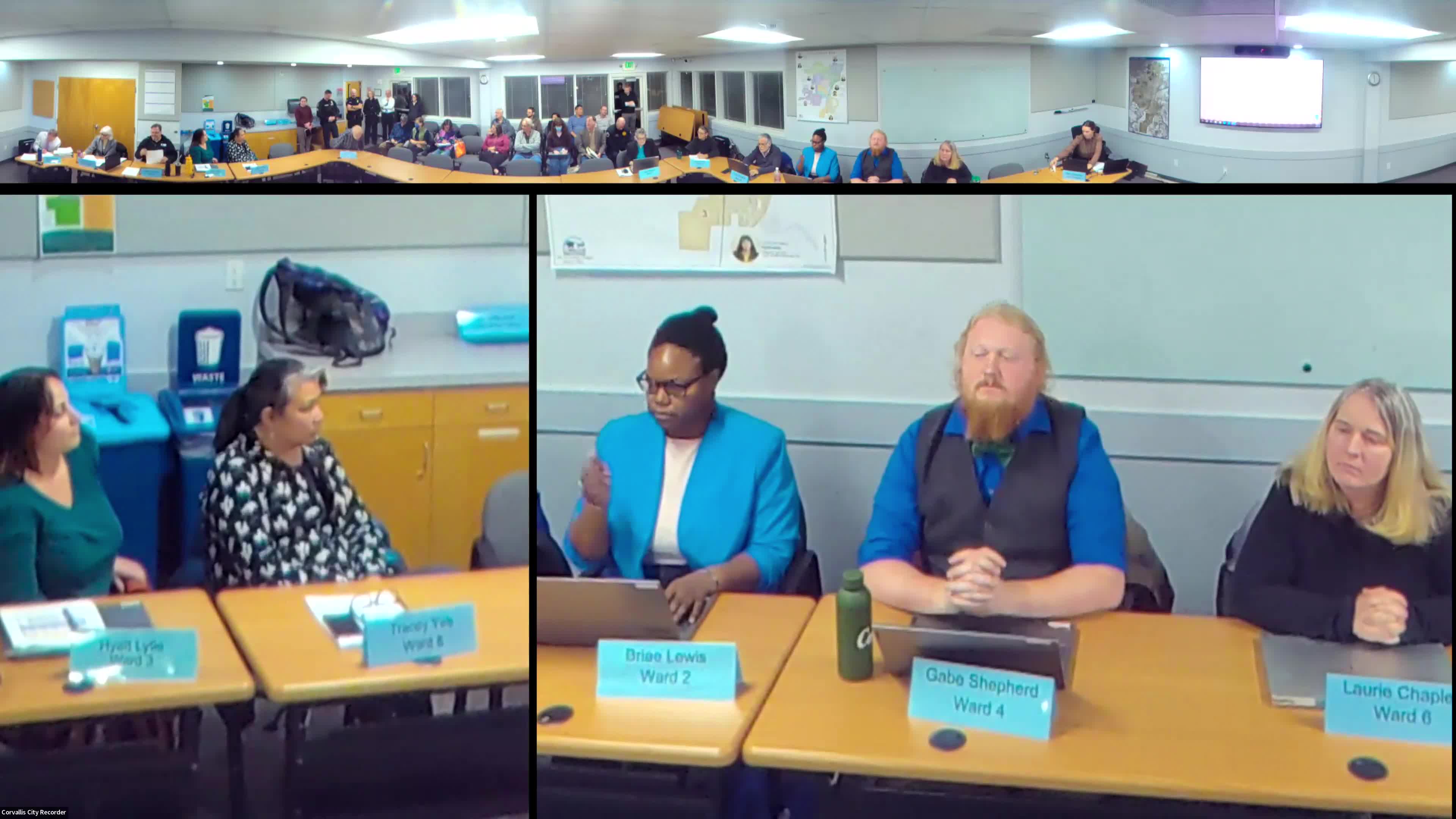Architect advocates for flexible building design at city meeting
This article was created by AI summarizing key points discussed. AI makes mistakes, so for full details and context, please refer to the video of the full meeting. Please report any errors so we can fix them. Report an error »

In a recent Corvallis City Council work session, a passionate discussion unfolded around the future of city infrastructure and design. As council members gathered under the warm glow of city hall lights, one speaker took the floor to express concerns about the proposed architectural designs for new buildings, likening them to outdated twentieth-century styles. The speaker argued that such designs would not only waste energy but also fail to meet the evolving needs of the community.
Drawing a parallel to technology, the speaker posed a thought-provoking question: would anyone invest in a new computer or cell phone with the intention of using it for fifty years? The answer was clear—such an investment would be impractical, as technology rapidly becomes obsolete. This sentiment extended to city planning, where the speaker urged for flexibility in building designs to avoid costly renovations every couple of decades.
The emphasis was on creating spaces that could adapt to future needs rather than being locked into specific functions that may soon become irrelevant. For instance, a library designed with a dedicated room for a card catalog would quickly become outdated as digital resources take precedence. The speaker warned against investing in structures that might not serve their intended purpose in the years to come, especially with the rise of innovations like self-driving transit.
In a nod to efficiency, the speaker referenced the Pareto principle, suggesting that focusing on achieving 80% of a project could save significant costs and resources in the long run. This approach, they argued, would allow the city to remain agile and responsive to change.
As the session progressed, the council also addressed logistical updates, including the delayed closure of the Van Buren Bridge due to weather conditions, and reminded attendees of an upcoming community event regarding the South Wales area plan.
The discussions highlighted a critical moment for Corvallis as it navigates the balance between tradition and innovation in urban planning, urging a forward-thinking approach that prioritizes adaptability and sustainability for the future.
Drawing a parallel to technology, the speaker posed a thought-provoking question: would anyone invest in a new computer or cell phone with the intention of using it for fifty years? The answer was clear—such an investment would be impractical, as technology rapidly becomes obsolete. This sentiment extended to city planning, where the speaker urged for flexibility in building designs to avoid costly renovations every couple of decades.
The emphasis was on creating spaces that could adapt to future needs rather than being locked into specific functions that may soon become irrelevant. For instance, a library designed with a dedicated room for a card catalog would quickly become outdated as digital resources take precedence. The speaker warned against investing in structures that might not serve their intended purpose in the years to come, especially with the rise of innovations like self-driving transit.
In a nod to efficiency, the speaker referenced the Pareto principle, suggesting that focusing on achieving 80% of a project could save significant costs and resources in the long run. This approach, they argued, would allow the city to remain agile and responsive to change.
As the session progressed, the council also addressed logistical updates, including the delayed closure of the Van Buren Bridge due to weather conditions, and reminded attendees of an upcoming community event regarding the South Wales area plan.
The discussions highlighted a critical moment for Corvallis as it navigates the balance between tradition and innovation in urban planning, urging a forward-thinking approach that prioritizes adaptability and sustainability for the future.
View full meeting
This article is based on a recent meeting—watch the full video and explore the complete transcript for deeper insights into the discussion.
View full meeting